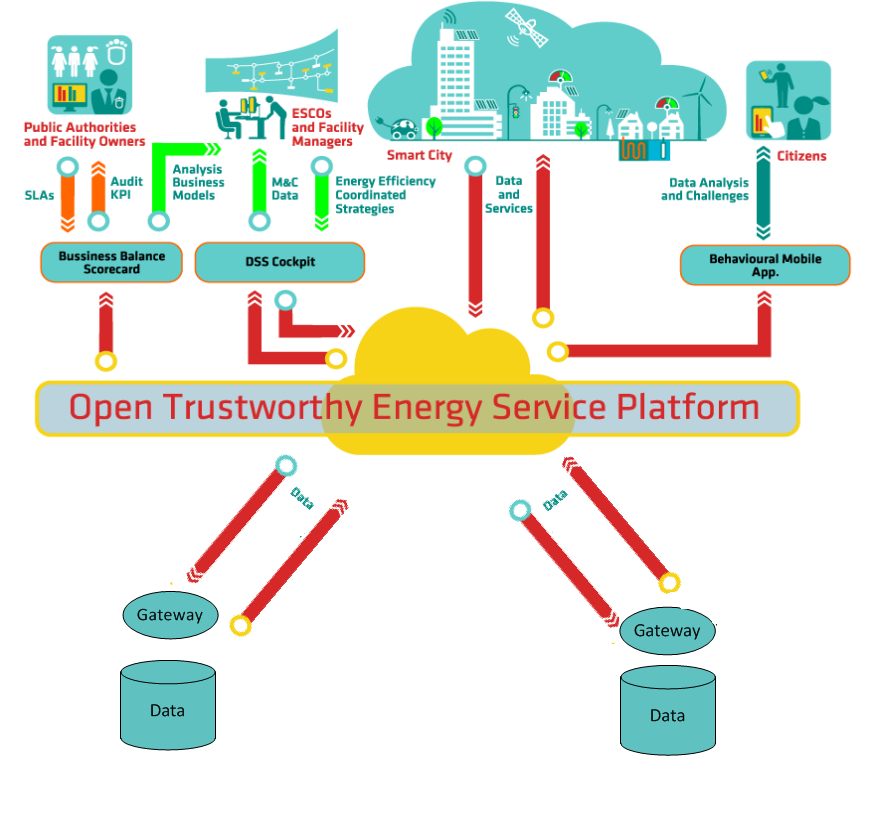Data Modeling for APIs. Part 5: Modeling vs. Meta-Modeling

Recently i was involved the creation of a data model for a project in the Energy domain. As this was an international, multi-partner project with many stakeholders and respective components, a dillema emerged for debate: to model, or to meta-model? We use this occassion as an example to mention the pros and cons for each […]
Read More →RDF on Hadoop and Schema on Read vs. Schema on Write

One of the challenges for any Big Data solution is dealing with scale, and RDF stores are no exception: going for billions of RDF triples (the equivalent of rows in the SQL world) is not trivial. Hadoop on the other hand is great at scaling out on commodity hardware, which is a feature every MPP […]
Read More →SPARQL City and Benchmarks

We have written in the past about SPARQL, Hadoop and benchmarks. In this post, we take a look at a company that combines all of these subjects, SPARQL City, on the occasion of the results they released after subjecting their product, SPARQLVerse, to the SP2 benchmark. This year’s NoSQLNow conference was colocated with SemTechBiz, providing […]
Read More →Intellectual property thoughts: on Ideas and Patents

Recently we have seen 2 US court rulings that could bring on important changes in intellectual property, one related to Patents & Ideas and one to Copyright & APIs. Even though at first it may seem this is only relevant for the US, as anyone who has ever been involved in IT Entrepreneurship can tell […]
Read More →Personal Data from the Source: How and Why Consumers and Marketers Can Connect

We saw in the previous posts a couple of examples of online marketing gone wrong. The common thread for these examples, and others like them, is the desire marketers have to reach out to new audiences – which is perfectly normal. But in many cases what they are doing is using a new medium – […]
Read More →Online Marketing and Data Protection: Dos, Don’ts, and a hint for a way forward

We have seen how marketing campaigns can backfire when common sense and CRM – MDM are missing from the mix. To err is human of course, so we should be forgiving both as IT professionals and as consumers, provided that we see tangible recognition of errors and a commitment to make amends. In this post, […]
Read More →The wrong strategy, the wrong way: cold-calling your way to marketing, technical and business failure

Do you think cold-calling still works? Trying to sell random stuff to random people on the phone is not exactly the most unobtrusive, effective or sophisticated strategy. It’s the kind of thing I would expect and advise especially technology companies to stay away from, for a number of reasons. This is an account of the […]
Read More →Structure Data and the Competitive Landscape

Structure Data 2014 was another excellent Gigaom event. To anyone who has ever been to one, this is no surprise. Here’s my pick of the most interesting sessions and related news. Intel and its Hadoop distribution strategy Strange as it may sound, Intel has its own Hadoop distribution. Or at least it did up to […]
Read More →Unlikely PaaS alliances, strange offerings, and variable gauges

Recently we’ve seen developments in PaaS offerings that may strike some as odd or surprising: first, RedHat offers Microsoft .Net and SQL Server as cloud services, and then Microsoft offers Oracle’s flagship database, WebLogic Server middleware and Java on its Azure platform as “license-included virtual machine images” in the Windows Azure Image Gallery. What’s this […]
Read More →On APIs, JSON, Linked Data, attitude and opportunities

I’ve been meaning to revisit some of the things i’ve been writing about and getting feedback on lately – APIs, the JSON vs. XML “non” debate and Linked Data. My focus was going to be on JSON-LD as the low-hanging fruit of Linked Data, and this week some news came out that gave me the […]
Read More →